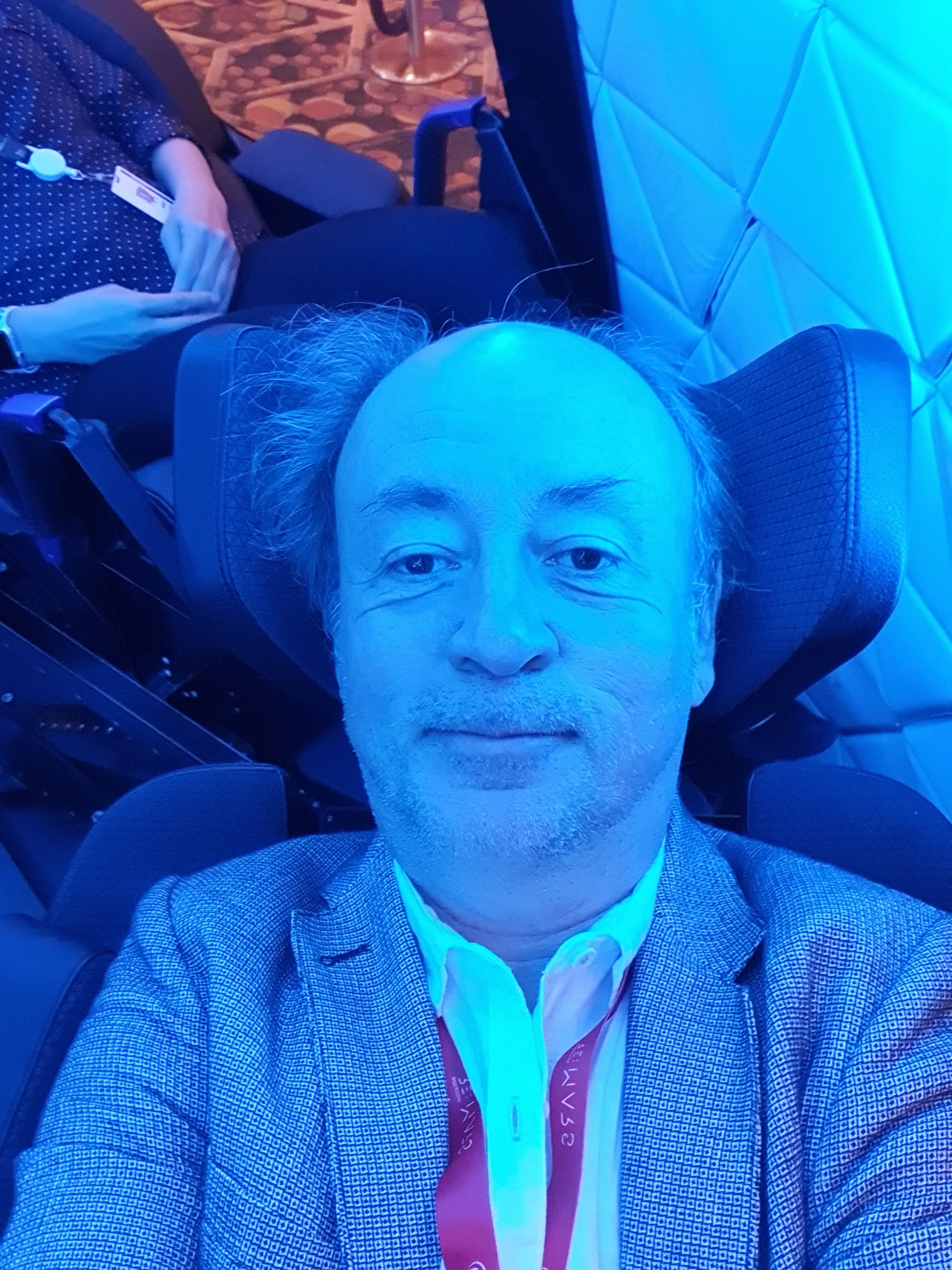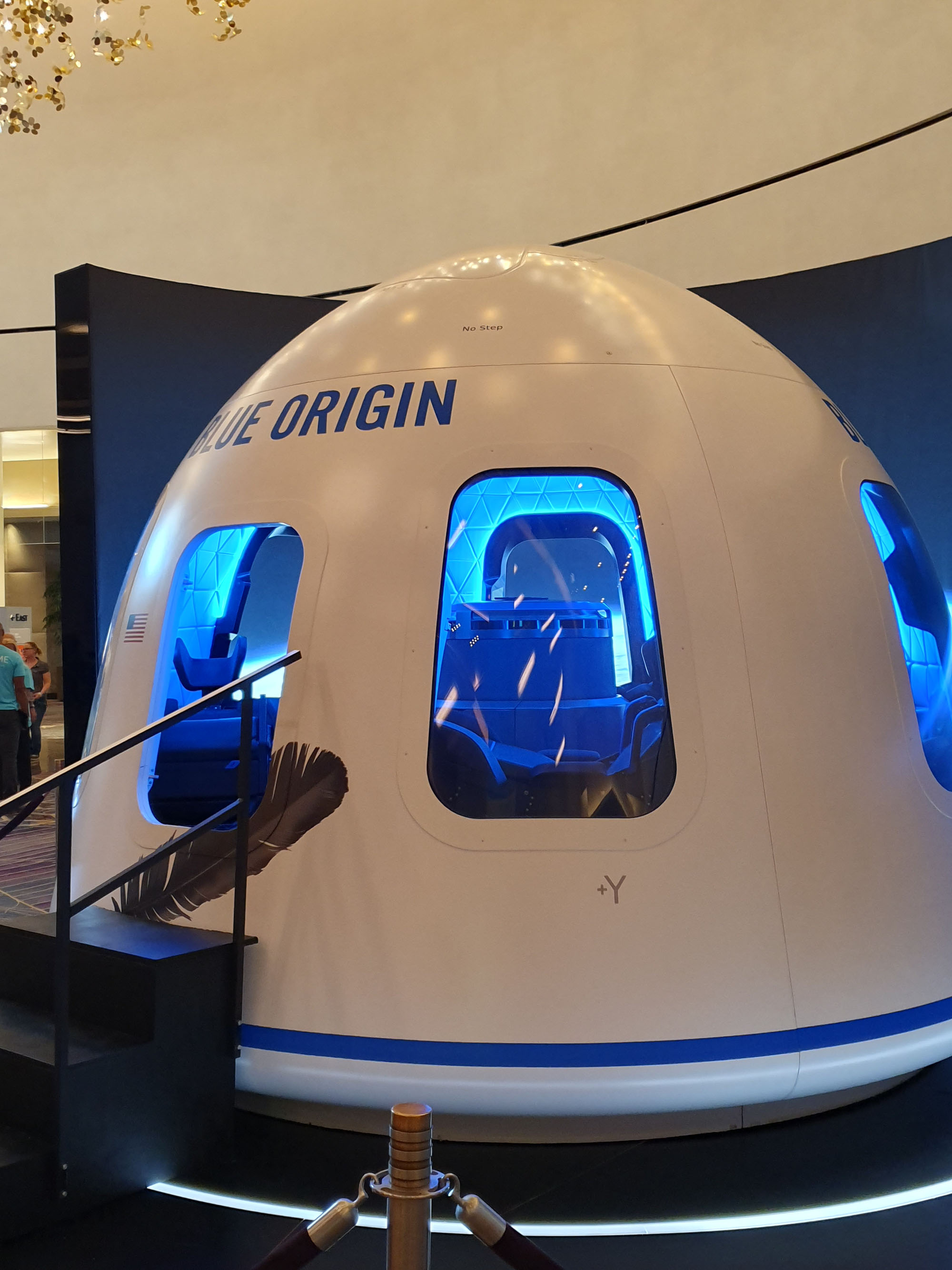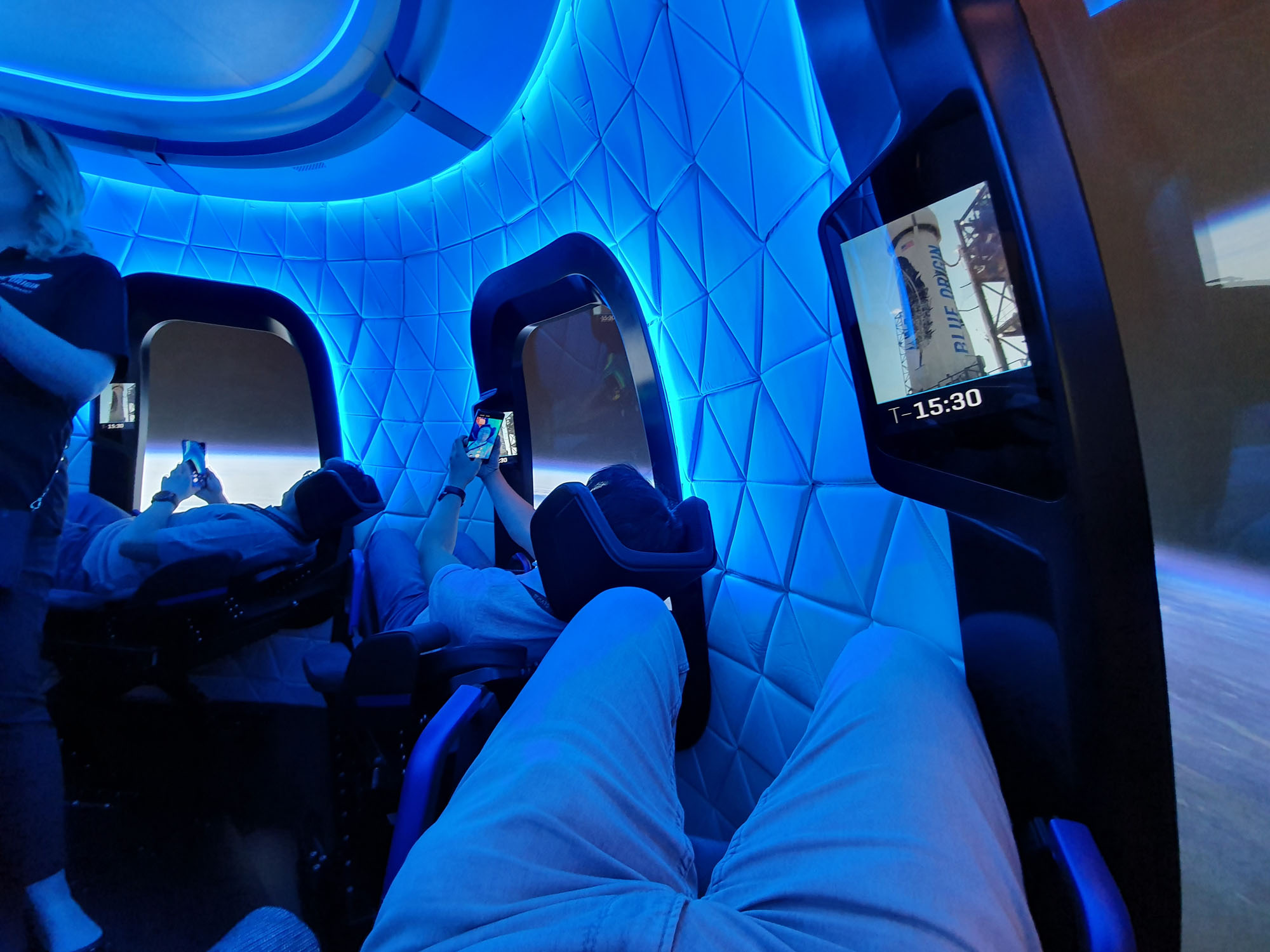Into space with Blue Origin: test seating in New Shepard
In 2019, the private space travel company Blue Origin is still planning on being the first private organization to bring humans above the Karman line to an altitude of 100 kilometers (62 miles) and thus officially into space. The company founded by Jeff Bezos (Amazon) is setting its hopes on the “New Shepard,” a suborbital rocket with a passenger and cargo capsule that is launched and also landed by remote control – and is also reusable. It’s not yet clear how expensive the flights will be, but its competitor Virgin Galactic offers something similar for $250,000 (but not with “real” rockets and not above the Karman line).
I was able to try out the capsule at the Re:MARS Conference hosted by Amazon in Las Vegas – without actually launching into space, unfortunately. The capsule has room for six passengers. Each traveler has his or her own large window (considerably larger than an airplane window). Space in the capsule is naturally somewhat tight. The reclined seats are designed so that you sit with your knees bent. Nevertheless, I felt very comfortable. That is also not an unimportant detail, because ultimately, you’ll have to be able to endure up to 4.7g in that seat (almost five times the acceleration due to gravity).
A display on the window shows how the vehicle is doing at that moment. When the vehicle reaches its maximum altitude (apogee), passengers can unbuckle themselves and experience zero gravity for a few minutes. Then it’s time to go back down – first in free fall, then parachutes decelerate the capsule, and finally the capsule’s own engine takes over. Even the rocket lands upright under its own power; all components are reusable several times. Bezos imagines that the system will one day be able to be reused immediately, like landing in an airplane at an airport and then taking off again. That should be able to really drive the costs down.
The launch and landing will take place in West Texas. Blue Origin has built its own small spaceport there and there is plenty of room for landings in the desert. The cylinder in the middle of the capsule hides the rocket engine that separates the capsule from the rocket in the event of an emergency – which has already been shown to work several times in tests.



